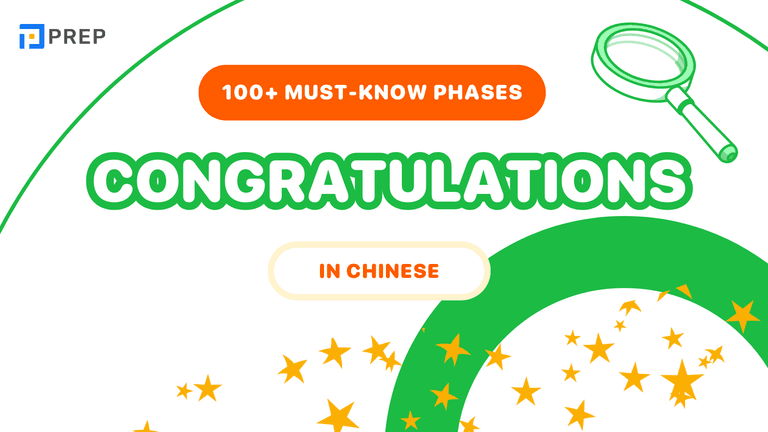Mastering Quotation Marks in English: Rules, Punctuation & Examples
This comprehensive guide explains quotation marks in English writing, covering double and single types primarily used for direct quotations. It details essential punctuation rules, highlighting differences between American English (which places periods and commas inside quotation marks) and British English (which only does so if they're part of the original quote). The content addresses how to handle various punctuation marks with quotations, regional style preferences, and nested quotations. It also covers exceptions like block formatting for extended quotes, omitting marks for indirect speech, and specialized uses such as indicating technical terms or skepticism, while cautioning against using quotation marks for emphasis.
- I. Understanding the Basics: What Are Quotation Marks in English For?
- II. Punctuating Correctly with Quotation Marks: The Essential Rules
- III. Double vs. Single Quotation Marks in English: Knowing Which to Use
- IV. When Not to Use Quotation Marks: Important Exceptions
- V. Exploring Nuances and Specific Cases
- VI. Frequently Asked Questions About Quotation Marks in English
I. Understanding the Basics: What Are Quotation Marks in English For?
Quotation marks serve as essential signposts in written English, directing readers to recognize direct speech and borrowed language.
-
Defining Quotation Marks (" " and ' ')
Quotation marks in English are punctuation symbols that come in two forms: double quotation marks (" ") and single quotation marks (' '). These critical markers primarily serve to indicate quoted or spoken language within a text. Their proper application distinguishes professional writing and ensures clarity by explicitly marking borrowed language or direct speech from surrounding content.
-
The Primary Role: Enclosing Direct Quotations
The fundamental purpose of quotation marks is to set off the exact words spoken or written by someone else. When you reproduce someone's precise language, quotation marks signal to readers that these specific words belong to another source. For example: According to the professor, "The experiment yielded unexpected results that contradict previous findings in the field." Here, the quotation marks clearly identify the professor's exact words, distinguishing them from your own writing.
II. Punctuating Correctly with Quotation Marks: The Essential Rules
Mastering quotation marks in English requires understanding their relationship with other punctuation marks. These rules vary between American and British English in specific ways that every writer should recognize.
1. Regional Differences: American vs. British Punctuation
Periods and Commas present the most significant distinction between American and British conventions:
American English Standard: Periods and commas always go inside the closing quotation mark, regardless of whether they were part of the original quotation.
- The witness stated, "I saw nothing unusual that night."
- The receptionist said, "Your appointment is confirmed," and handed me a card.
British English Standard: Periods and commas follow logical placement. They go inside quotation marks only when they form part of the original quoted material. Otherwise, they remain outside.
- The witness stated, "I saw nothing unusual that night".
- The receptionist said, "Your appointment is confirmed", and handed me a card.
This distinction represents the primary difference in punctuation with quotation marks between the two major English style systems.
2. Universal Rules for Both American and British English
The following punctuation rules remain consistent across both American and British English:
Question Marks in English and Exclamation Points follow logical placement in both systems. These punctuation marks go inside the closing quotation mark when they belong to the quoted material:
- She asked, "When will the results be published?"
- He shouted, "Watch out for the falling debris!"
If the question mark or exclamation point applies to the entire sentence rather than just the quoted portion, it goes outside the quotation marks:
- Did he really claim "the matter is resolved"?
- I can't believe she called that performance "adequate"!
Colons and Semicolons maintain consistency across both conventions. These marks always remain outside the closing quotation mark, regardless of context:
- We discussed three "core values": integrity, excellence, and innovation.
- The speaker described the plan as "ambitious"; however, she acknowledged its limitations.
Dashes and Parentheses also stay outside quotation marks in both systems:
- The "final solution"—though he hated that term—had several critical flaws.
- She described herself as "detail-oriented" (a quality the position required).
Understanding these punctuation rules provides the foundation for properly deploying quotation marks in any English writing context, whether following American or British conventions.
III. Double vs. Single Quotation Marks in English: Knowing Which to Use
Beyond punctuation placement, writers must choose between double and single quotation marks according to regional conventions and specific contexts. These choices reflect established traditions in different English-speaking regions.
-
Standard Usage in American English (Double First)
American English primarily uses double quotation marks (" ") for direct quotations, dialogue, and certain titles. This convention appears consistently across most American publications, academic writing, and business communications. Double quotation marks represent the default choice for quoting in American English contexts, creating immediate visual recognition for readers.
-
Standard Usage in British English (Often Single First)
British English traditionally prefers single quotation marks (' ') for primary quotations, though practices vary across publications. Many British newspapers, academic journals, and publishers maintain this convention, while others have adopted double quotation marks. The trend toward internationalization has somewhat blurred these distinctions, but single quotes remain common in British contexts.
-
Handling Quotations Within Quotations (Nesting)
When one quotation appears inside another, both American and British English follow the same alternating pattern. The system simply reverses whichever mark type serves as the primary quotation indicator.
Example (American English):
-
The professor explained, "When Shakespeare wrote 'To be or not to be,' he created perhaps the most famous line in English literature."
Example (British English):
-
The professor explained, 'When Shakespeare wrote "To be or not to be", he created perhaps the most famous line in English literature.'
IV. When Not to Use Quotation Marks: Important Exceptions
Beyond punctuation placement, writers must choose between double and single quotation marks according to regional conventions and specific contexts. These choices reflect established traditions in different English-speaking regions.
-
Handling Long Quotations (Block Quotes)
Extended quotations require different formatting than shorter quotes embedded within text. When quoting prose that extends beyond four lines, or poetry excerpts longer than three lines, format the material as a block quote instead of using quotation marks. Indent the entire passage from both margins, use single spacing, and omit the quotation marks entirely. This formatting visually distinguishes the quoted material while maintaining readability for longer passages.
-
Reporting Indirect Speech (Paraphrasing)
Quotation marks in English should never enclose paraphrased or summarized content. When you report what someone said without using their exact words, omit quotation marks entirely.
Example (direct speech with quotation marks):
-
The CEO said, "We will implement the new policy next month."
Example (indirect speech without quotation marks):
-
The CEO said that they would implement the new policy the following month.
Notice how the latter example adjusts pronouns and verb tenses without quotation marks in English.
V. Exploring Nuances and Specific Cases
Beyond these core rules, quotation marks have some less common uses and specific considerations worth exploring for complete mastery. These specialized applications demonstrate the versatility of quotation marks in English while maintaining clear boundaries around their appropriate use.
What Are Some Less Common Uses for Quotation Marks in English?
Quotation marks occasionally serve specialized functions beyond indicating direct speech or quotations:
-
Introducing technical terms: When introducing a technical term for the first time, quotation marks can signal its specialized nature. Example: The study focused on "allostatic load," a concept that measures cumulative physiological stress.
-
Scare quotes: Writers sometimes employ quotation marks to indicate irony, skepticism, or unconventional usage. Example: His "expert" advice contradicted basic principles in the field.
-
Translations or definitions: Some writers use quotation marks for translations or definitions directly in text. Example: The French word 'chien' means "dog" in English.
Should Individual Words Emphasized for Meaning Use Quotation Marks in English?
No, individual words emphasized for meaning generally should not use quotation marks. Italics provide the standard method for highlighting words discussed as words or emphasized for meaning.
Example (correct usage with italics):
-
The word literally is often misused in casual conversation.
Quotation marks in English around single words might suggest irony or skepticism rather than simple emphasis. Reserve quotation marks for their specific functions rather than as general highlighting tools.
In Dialogue, What Exactly is a "Dialogue Tag"?
A dialogue tag identifies the speaker in written conversation, typically including a verb that describes how something was said. These phrases like "she whispered," "he exclaimed," or "they replied" attribute speech to specific characters while often indicating the manner of speaking. Dialogue tags provide essential context for readers, clarifying who speaks each line and sometimes conveying emotional undertones through speech verbs. Proper punctuation with dialogue tags depends on their placement relative to the quoted speech.
How Does Punctuation Inside/Outside Quotes Differ Massively Between Major Style Guides (like APA/MLA vs. Chicago)?
While the US vs. UK distinction represents the primary difference in quotation mark punctuation, specific style guides sometimes introduce additional variations. Academic style guides like APA, MLA, and Chicago Manual of Style generally adhere to American conventions for punctuation placement, but they differ in formatting block quotes, citation practices within quotes, and handling specialized material. Professional or academic writing requires consulting the relevant style guide for these nuanced distinctions beyond the basic US/UK differences in comma and period placement.
VI. Frequently Asked Questions About Quotation Marks in English
1. Why do style guides disagree about quotation marks?
Different style guides reflect the evolution of punctuation across regions and disciplines. American and British English developed distinct conventions due to historical publishing practices. Academic disciplines (MLA, APA, Chicago) standardized different approaches based on their specific needs. Understanding these historical differences helps explain why contradictory rules can exist simultaneously in modern English.
2. How do I handle quotation marks in English that contain errors?
When quoting text that contains grammatical errors, misspellings, or questionable statements, you can indicate your awareness of the error using [sic] in italics within square brackets immediately after the error. For example: "The report stated that 'the company made it's [sic] highest profit last quarter.'" This Latin abbreviation (meaning "thus" or "so") signals to readers that the error appeared in the original text and wasn't your mistake.
3. Can I modify quotations to fit my sentence structure?
Yes, but with clear indication of your changes. Use square brackets [ ] to show modifications or insertions, and ellipses (...) to indicate omissions. For example, changing "I think this approach will fail" to "She said that [the new] approach will fail..." clearly shows your modifications while maintaining the integrity of the quote. Always ensure your changes don't alter the original meaning or mislead readers.
4. How do quotation marks work with other formatting like bold or italics?
When quoted text requires additional formatting (like emphasis), the formatting applies to the entire unit, including the quotation marks themselves. For example, if emphasizing a quoted phrase in italics: "critical thinking". However, if only emphasizing part of a quote, apply formatting selectively: "The report described this as a significant development." Most style guides recommend explaining any emphasis you add to quotations with a note like [emphasis added].
Common errors include using quotation marks in English for emphasis (use italics instead), enclosing indirect speech in quotation marks, and misplacing punctuation relative to regional conventions. Avoiding these mistakes immediately elevates your writing's professionalism.
Precise quotation mark usage demonstrates your command of English writing conventions and shows respect for both your readers and the sources you cite. This attention to detail enhances your credibility as a writer and ensures your meaning comes through clearly. With these rules firmly established in your writing practice, you'll navigate quotation marks in English confidently across any English writing context.

Hi I'm Chloe, and I am currently serving as an Product Content Administrator at Prep Education. With over five years of experience in independent online IELTS study and exam preparation, I am confident in my ability to support learners in achieving their highest possible scores.
Comment
Premium content
View allPersonalized roadmap
Most read












